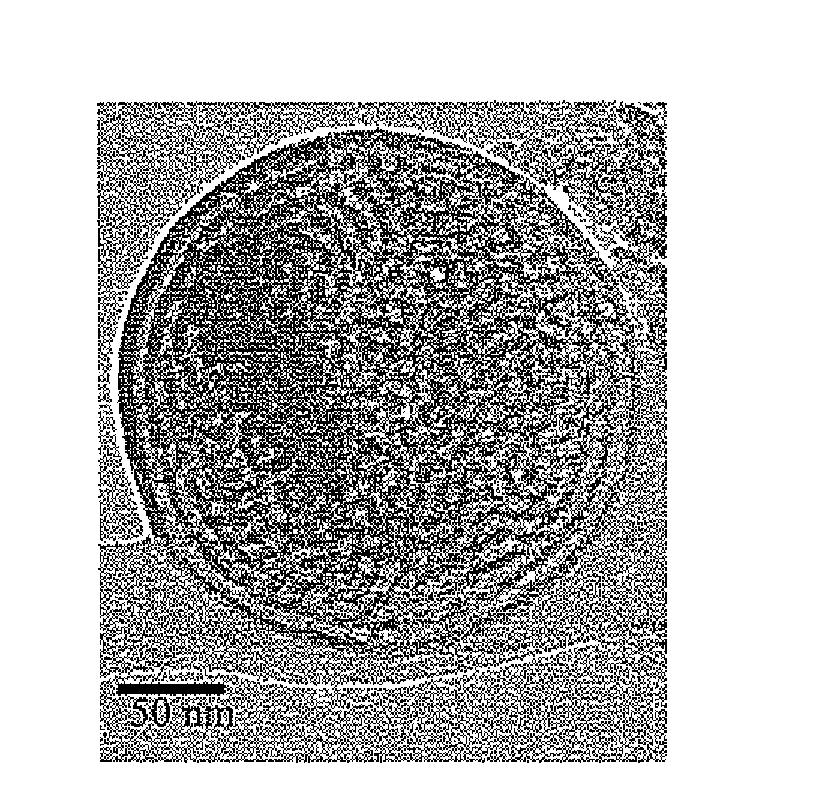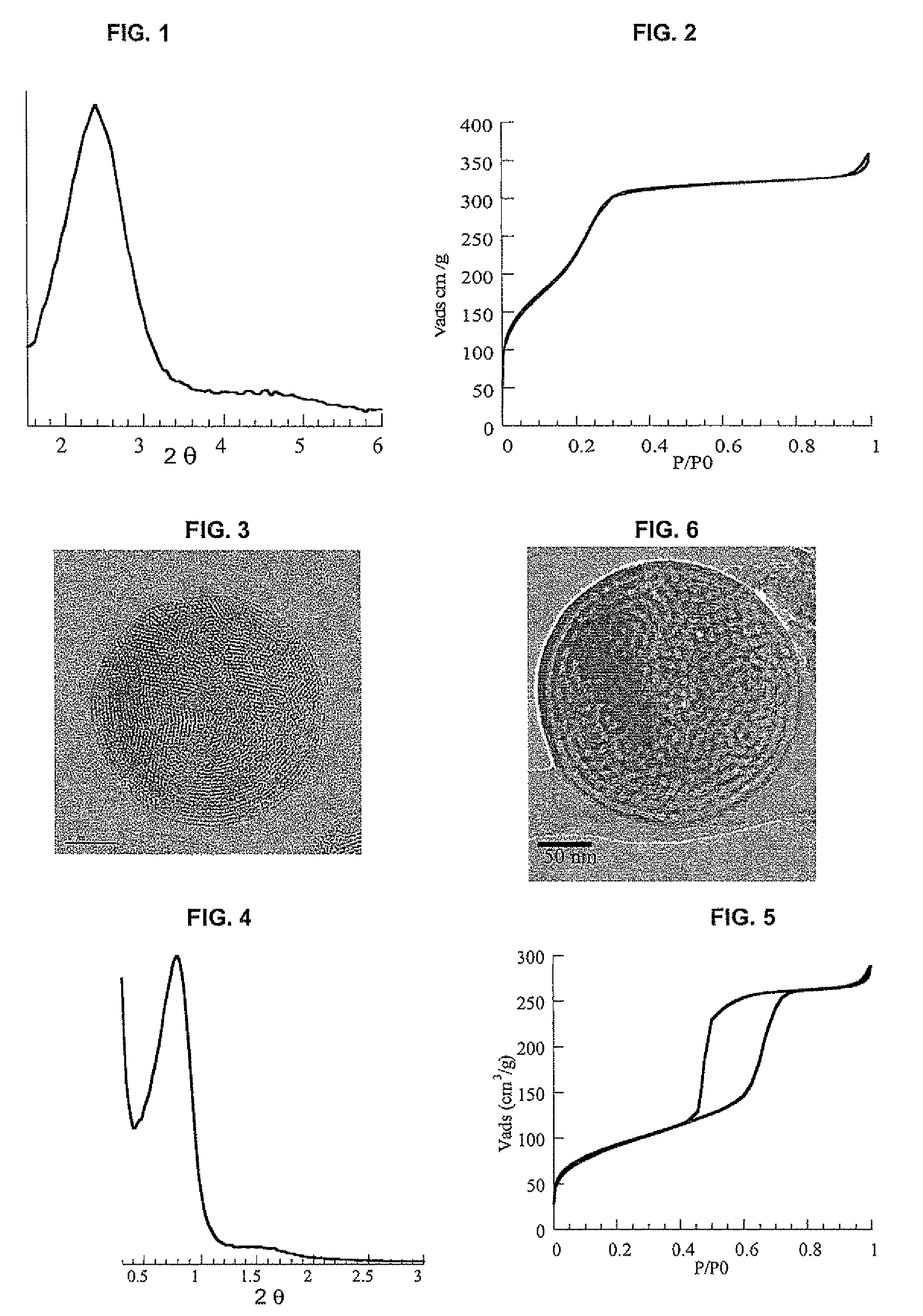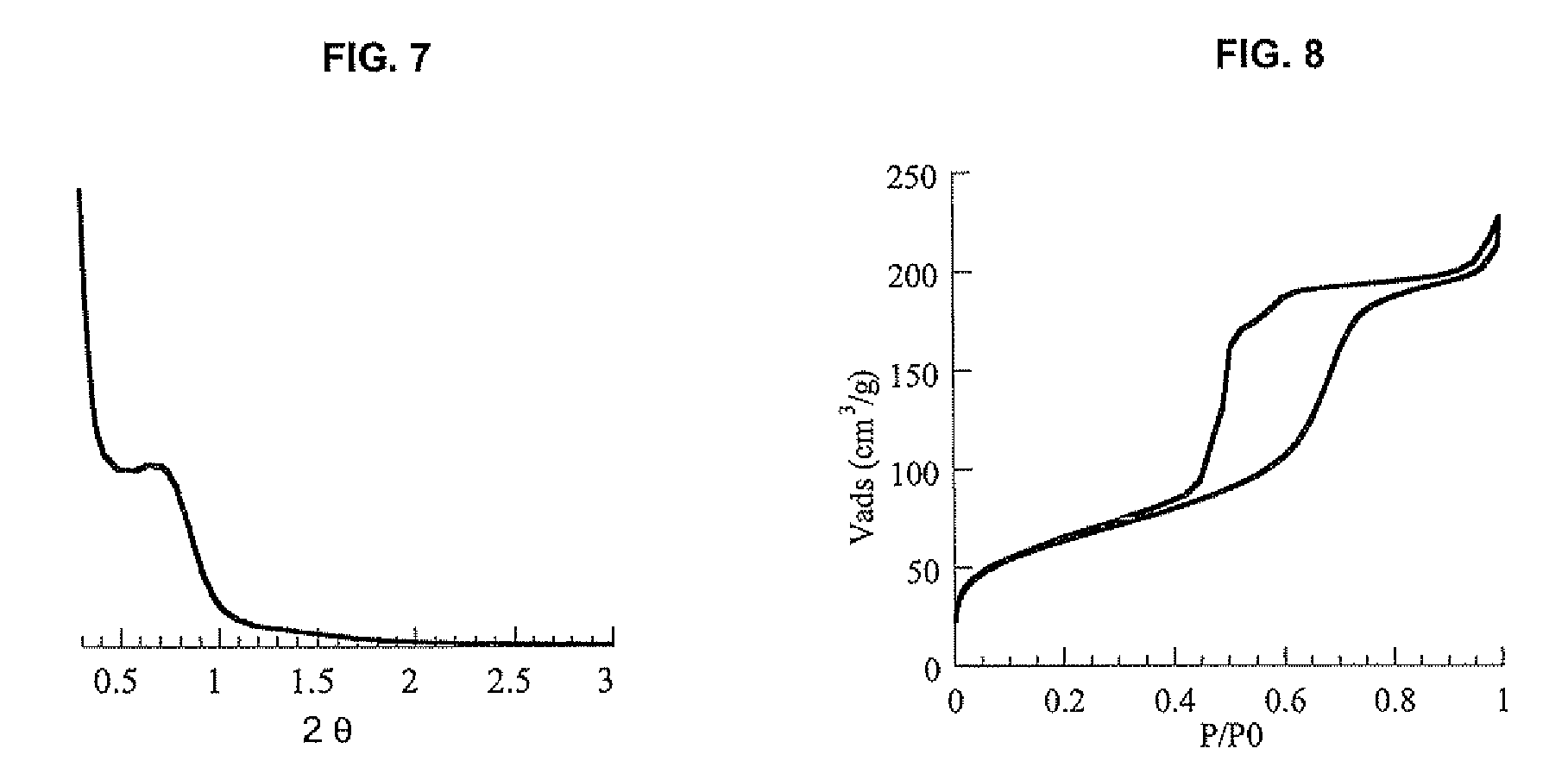Mesostructured aluminosilicate material
a technology of aluminosilicate and aluminosilicate, which is applied in the direction of silicates, silicon compounds, physical/chemical process catalysts, etc., can solve the problems of difficult to obtain all reagents, difficult to incorporate large quantities of aluminium, and low values of si/al molar ratio, etc., to facilitate the diffusion of compounds
- Summary
- Abstract
- Description
- Claims
- Application Information
AI Technical Summary
Benefits of technology
Problems solved by technology
Method used
Image
Examples
example 1 (
Invention)
Preparation of an Aluminosilicate Material with a Si / Al Ratio of 5
[0038]1.03 g of aluminium trichloride was added to a solution containing 30 g of ethanol, 14.5 g of water, 0.036 ml of HCl and 1.4 g of the surfactant CTAB. The ensemble was left at ambient temperature, with stirring, until the aluminic precursor had completely dissolved. 3.59 g of tetraethylorthosilicate (TEOS) was then added. After stirring for 10 min at ambient temperature, the ensemble was sent to the atomization chamber of an aerosol generator as described above and the solution was atomized in the form of fine droplets under the action of the vector gas (dry air) introduced under pressure (P=1.5 bars) as described above. The droplets were dried using the protocol described in the invention described above. The temperature of the drying oven was fixed at 350° C. The harvested powder was then calcined in air for 5 h at T=550° C. The solid was characterized by small angle XRD (FIG. 1), by the nitrogen ads...
example 2 (
Invention)
Preparation of an Aluminosilicate Material with a Si / Al Ratio of 10
[0039]0.52 g of aluminium trichloride was added to a solution containing 30 g of ethanol, 14.7 g of water, 0.036 ml of HCl and 1.4 g of the surfactant P123. The ensemble was left at ambient temperature, with stirring, until the aluminic precursor had completely dissolved. 4.09 g of tetraethylorthosilicate (TEOS) was then added. After stirring for 18 hours at ambient temperature, the ensemble was sent to the atomization chamber of an aerosol generator and the solution was atomized in the form of fine droplets under the action of the vector gas (dry air) introduced under pressure (P=1.5 bars). The droplets were dried using the protocol described in the invention described above. The temperature of the drying oven was fixed at 350° C. The harvested powder was then calcined in air for 5 h at T=550° C. The solid was characterized by small angle XRD (FIG. 4), by the nitrogen adsorption isotherm (FIG. 5: the indic...
example 3 (
Invention)
Preparation of an Aluminosilicate Material with a Si / Al Ratio of 3
[0040]1.56 g of aluminium trichloride was added to a solution containing 30 g of ethanol, 14.2 g of water, 0.036 ml of HCl and 1.4 g of the surfactant P123. The ensemble was left at ambient temperature, with stirring, until the aluminic precursor had completely dissolved. 3.14 g of tetraethylorthosilicate (TEOS) was then added. After stirring for 18 hours at ambient temperature, the ensemble was sent to the atomization chamber of an aerosol generator as described above and the solution was atomized in the form of fine droplets under the action of the vector gas (dry air) introduced under pressure (P=1.5 bars). The droplets were dried using the protocol described in the invention described above. The temperature of the drying oven was fixed at 350° C. The harvested powder was then calcined in air for 5 h at T=550° C. The solid was characterized by small angle XRD (FIG. 7), by the nitrogen adsorption isotherm ...
PUM
| Property | Measurement | Unit |
|---|---|---|
| size | aaaaa | aaaaa |
| size | aaaaa | aaaaa |
| molar ratio | aaaaa | aaaaa |
Abstract
Description
Claims
Application Information
 Login to View More
Login to View More - R&D
- Intellectual Property
- Life Sciences
- Materials
- Tech Scout
- Unparalleled Data Quality
- Higher Quality Content
- 60% Fewer Hallucinations
Browse by: Latest US Patents, China's latest patents, Technical Efficacy Thesaurus, Application Domain, Technology Topic, Popular Technical Reports.
© 2025 PatSnap. All rights reserved.Legal|Privacy policy|Modern Slavery Act Transparency Statement|Sitemap|About US| Contact US: help@patsnap.com



